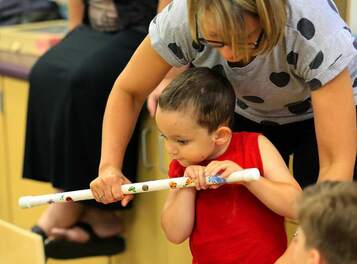Conductive Education
|
Conductive education (CE) is a comprehensive habilitation/rehabilitation method that uses active learning and the science of neuroplasticity to reduce the physical effects of various neuromotor impairments such as cerebral palsy, spina bifida, multiple sclerosis, Parkinson's Disease, and acquired brain injury. Conductive education combines physical activities with cognitive tasks, emphasizes communication and takes place in a group setting to optimize active participation and social interaction. It focuses on the development of the person as a whole and utilizes a complex program to teach skills related to gross and fine motor movements, social participation, communication and activities of daily living. Conductive education was developed in 1945 by a Hungarian doctor and educator named Andras Peto. Dr. Peto believed that motor control and coordination can be learned in order to improve the quality of life of people living with neuromotor challenges. The overall goals of conductive education include increasing the quality of an individual’s motor function and providing participants with the confidence and problem-solving skills needed to live as independently as possible within the greater community. |
Conductor Training Institutions
Aquinas College, Grand Rapids, MI |
Semmelweis University Andras Peto Faculty |
The Foundation for Conductive Education, Birmingham, UK |





